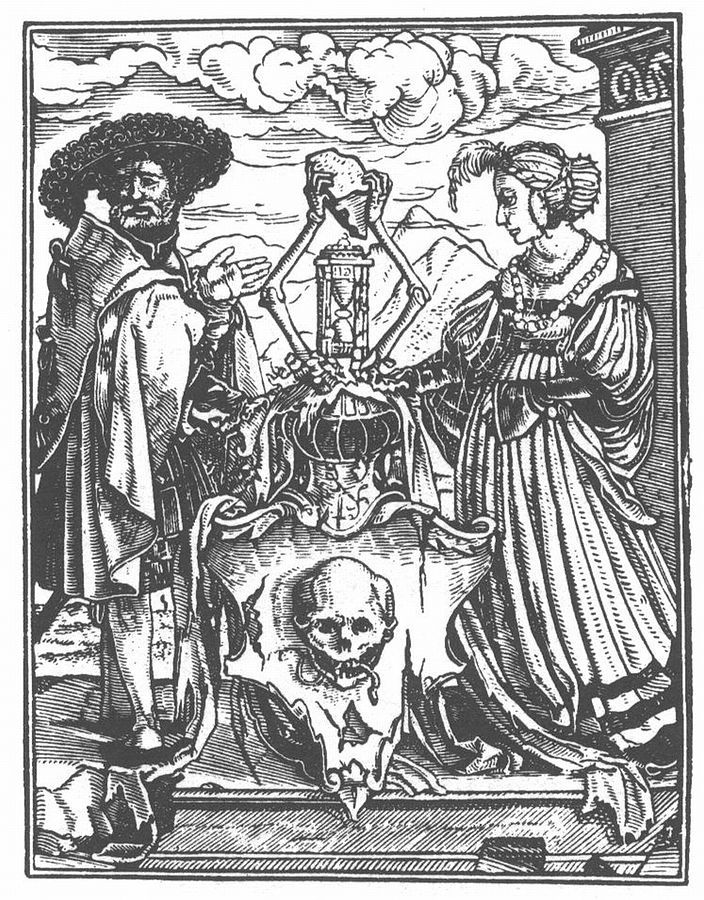
Introduction
For all its beauty, autumn is a season of dying. The changing leaves and suddenly brisk winds remind us—those blessed to live in northern parts—that winter is coming. Soon, we will huddle against the cold or seek the primal warmth of a fire. The festive and ubiquitous cultural celebration of Halloween likewise speaks of death, even as it attempts to make light of it and tame its terrors.
For the Christian, however, the threat of death, in whatever form it comes, does not have the final word. Jesus said it this way: “Unless a grain of wheat falls into the earth and dies, it remains alone; but if it dies, it bears much fruit” (John 12:24). This kind of death, it turns out, is not the end; it is the entrance to life, the force which looses the dreaded tentacles’ suffocating grip.
Yet we who have been liberated from the sting of death by the resurrection of Christ still sometimes face dread when we think about our own mortality. It happens when we observe the creepily realistic corpses of our neighbor’s Halloween decorations. It happens when our 94-year-old grandmother is on her deathbed and begins to talk to deceased relatives as though they were at the foot of her bed. And it happens in film, such as when Martin Luther, performed by Joseph Fiennes, peers into the reliquary at John the Baptist’s skull.
There is something valuable about looking death squarely in the face. But how we look at it matters a great deal. It is here that the Reformation makes a vital contribution.
The Response of a Monk
One day in July 1505, while walking to law school near the outskirts of a Saxon village, Martin Luther encountered a fierce thunderstorm. Fast-moving clouds sprinkled the parched road before him, gently at first, and then more intensely. The sky flashed and rumbled before a lightning bolt struck the ground near him with a flash. Stunned, Luther fell to the ground in terror. Exposed to nature’s fury, he cried out, “Help me, Saint Anne! I will become a monk.”
Within a few weeks, Luther arrived at the Augustinian cloister as a novice. Before the prior, who stood upon the steps of the altar, Luther prostrated himself. The prior asked, “What do you seek?” Luther responded, “God’s grace and your mercy.” The prior then described the rigors of the cloistered life: abdication of self-will, a sparse diet, mortification of the flesh, hours alone in prayer by night, labors by day, and the reproach of begging. Was he ready to embrace such a calling? “Yes, with God’s help,” was the answer. With that, the assembled choir began to chant, and Luther’s head was tonsured.
The prior asked, “What do you seek?” Luther responded, “God’s grace and your mercy.”
Martin Marty says of the young Luther, “He makes most sense as a wrestler with God, indeed, as a God-obsessed seeker of certainty and assurance in a time of social trauma and of personal anxiety, beginning with his own.”[1] At the Augustinian monastery, Luther sought to assuage his anxiety, but it persisted. Before the procession of the sacred host, he recoiled in dread like Israel before Sinai’s brooding storm clouds or like David before the Ark the moment Uzzah was struck dead. Such fear of death, of judgment, of Hell motivated Luther to lay hold of every resource the church had to offer: sacraments, pilgrimages, indulgences, and the intercession of the saints. Nevertheless, his dread remained.
Death’s Pervasive Power
Luther was a product of the late medieval age, when one’s life was regarded as little more than a dress rehearsal for the afterlife. This otherworldly outlook was shared by virtually everyone in society, as exemplified in the danse macabre (dance of death), the haunting portrayal of death’s decisive power in which representatives of all social ranks—even the pope and emperor—were confronted by a grinning corpse, a vivid reminder of death’s inevitability.

Holbein d. J.; Danse Macabre. XLI. The Allegorical Escutcheon of Death.
The dead were regarded as the church’s silent majority and occupied spaces close to the heart of medieval people. To be sure, there is something good and necessary about this perspective. This great cloud of witnesses provides needed wisdom and inspiration to the church. G.K. Chesterton, the great Catholic writer of the last century, stated, “Tradition means giving votes to the most obscure of all classes, our ancestors. It is the democracy of the dead. Tradition refuses to submit to the small and arrogant oligarchy of those who merely happen to be walking about.”
However, there can be a morbid and misguided preoccupation with the dead, one that was thrown into stark relief by the late medieval period. According to Jacques Le Goff, this preoccupation assumed a solidarity between the dead and the living in which the faithful contemplated their own deaths and begged (or demanded) the prayers of the living after they were gone.[2] Facing the eternal threshold, the living of this era sought to alleviate purgatory’s pains for those they would soon join.
Death, then, entered the domain of the living, evidenced by a host of funeral practices and lore, such as the return of unquiet souls on All Souls’ Eve. Masses, death anniversaries, and “obits” (services of remembrance) were used by clergy to promote an awareness of the intermediate world. And, most significantly, the clergy relied upon indulgences, by which they supervised the consumer demand for relief from temporal punishment that they had created.
The Reformers’ Message
Surrounded by cultural symbols of death, Martin Luther pointed to the inner shadows upon the soul as the most oppressive and dreadful threat: “We bring death into the world with us, bear it and drag it about with us from the moment of our birth, and all of us are traveling the same road together.”[3] This dread, Luther’s anfechtung, tempts us to find confidence in our own virtue and merits, a hopeless step that fares no better than placing one’s “foot upon a log floating in the water.”[1]
Martin Luther
“We bring death into the world with us, bear it and drag it about with us from the moment of our birth, and all of us are traveling the same road together.”
No, says Luther after finding comfort in the gospel of grace: “[Faced with such temptation] you should above all things center your attention on the external Word and cling to it; otherwise there is no help.”[2] Luther expressed this truth in a hymn that appeared around 1524:
In the midst of utter woe,
When our sin oppress us,
Where shall we for refuge go,
Where for grace to bless us?
To Thee, Lord Jesus, only!
Thy precious blood was shed to win
Full atonement for our sin.[3]
As gospel light shined upon the fears and morose rites of the early sixteenth-century, it gradually redefined Christian hope. One thinks, for example, of how the Reformers exposited texts such as Ezekiel 37, the valley of dry bones. In keeping with Luther’s emphasis upon an external word, John Calvin offered a hopeful message in the valley, stressing the efficacious nature of divine grace that comes “solely by the power of his Word.”[7] Similarly, Peter Martyr Vermigli emphasized God’s transforming word, embraced by faith, as one’s only sure hope. “The prophet was commanded to do something marvelous,” Vermigli writes, “to prophesy and speak to bones so crude, brute, and dumb that they could not hear or understand anything.”[8] This saving word of Christ cut through the fog of dread, bringing bone, sinew, and flesh together in resurrection life.
That Word Above All Earthly Power
Despite all this good news, we still must still face death. Whether we like it or not, the uninvited stranger will come. In the words of D.H. Lawrence’s poem, The Ship of Death, which he wrote shortly before he died at age forty-four from tuberculosis:
Have you built your ship of death, O have you?
O build your ship of death, for you will need it.
The grim frost is at hand, when the apples will fall
thick, almost thunderous, on the hardened earth.
And death is on the air like a smell of ashes!
Ah! Can’t you smell it?
And in the bruised body, the frightened soul
Finds itself shrinking, wincing from the cold
That blows upon it through the orifices.
But the way we look at death matters a great deal. How do we lay hold of life amid the shadows? When we’re in the valley of dry-bleached bones and the question comes to us, “Can these bones live?”, how do we answer? The Reformation reminds us that we cannot answer by looking at ourselves or our deceased loved ones, but only by looking to Jesus.
“Despite all this good news, we still must still face death. Whether we like it or not, the uninvited stranger will come.”
This perspective came into focus at my 94-year-old grandmother’s funeral. In the oration, the associate priest from her parish said, “Because Grandma was a good person, we can be sure that she is in heaven. And since she is now in heaven with Jesus, she serves as our connection to God. Therefore, we ought to pray to Grandma and let her bring us to Jesus.” It was a theological (and pastoral) train wreck.
I had been asked, however, to conclude the service by pronouncing the benediction. “Dear family and friends, there is one name under heaven by which we are saved, Jesus Christ. There is one Mediator between God and man, Christ Jesus. And let us be clear, there is one name in which we dare to approach Almighty God in prayer; it is the name of our Lord and Savior, Jesus Christ.”
Whatever the season, a flawed and fallible Luther knew what it was like to fear death and the powers of Hell. But the great Reformer also knew how those fears could be quelled:
And though this world, with devils
filled,
should threaten to undo us,
we will not fear, for God has willed
his truth to triumph through us.
The prince of darkness grim,
we tremble not for him;
his rage we can endure,
for lo! his doom is sure;
one little word shall fell him.
Let us—as heralds of Christ’s new
creation—share the hope we have in the One who conquered death.
